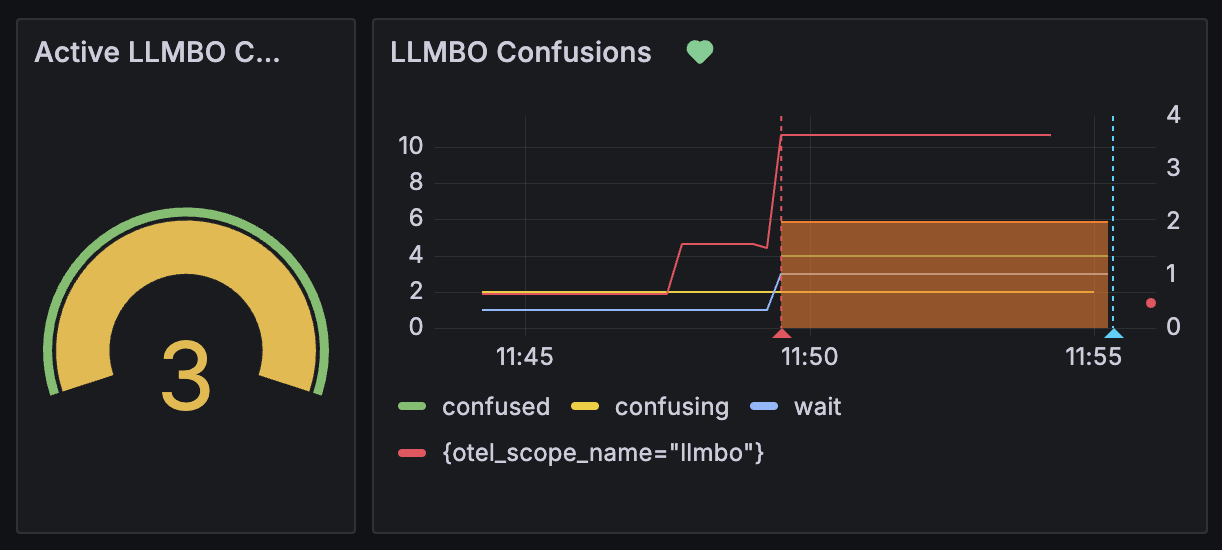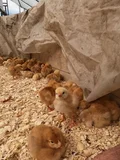TL;DR
We harvested greens, beets, and salad turnips, then cleaned and packed them. On the last week of the summer CSA, we are looking forward to cooler days for the next month of the fall share season.
Everything Is Going to Be…O-Kale
As I bunched kale this morning under the warming sunlight, I had time to think about what the next few months would bring me on this journey. I thought about how busy this season gets for families with kids in schools, how the farm will be closing down for the winter and what that would entail, how snow removal will seem like a luxury vacation activity for me after all this farm work, and what kind of tech work I will be able to ethically scrounge up to cover the economic futures of working on the farm again next year.
I thought about 2nd and 3rd generation farmers…then I thought about roofers, mechanics, nurses, cleaners, fishermen, and teachers. I thought about all my local casual friends who exist within a blue collar noose, how civilization wouldn’t exist if there wasn’t a system to manufacture consent. I thought about the people who are getting deported without due process or consent, even the manufactured kind. Then I realized I had finished bunching the kale we needed and moved to the next task just like they, now we, do every day.
I know the health benefits of kale…antioxidants, vitamin C and K, on the immune system and for blood pressure…but I still won’t eat it except for under certain conditions involving sausage, carrots, potatoes, and broth. Dehydrated, it’s more fragile than a white male’s masculinity. If there was a United States of Kale, I wouldn’t subscribe; I’d just not buy into what’s being sold. De-funding something as big as an industrial complex is…complicated…unless a collective effort is involved, otherwise it’s just a personal choice and inconsequential.
Dancing to a Different Beet
If the world is run by money and power, the best thing I can do is unsubscribe to what I don’t agree with. I’d rather make my life harder on my own terms than someone elses. Some farmers take a similar ethos to their work while others don’t. Row crop farming focuses on value extraction, reducing everything to a bottom line on a budget and squeezing out everything that doesn’t compute in a spreadsheet. This is not creative or equitable enough to warrant my desire to build a business on. I’d rather pound sand or bunch beets, literally.
Last week’s class about farm business planning and cashflow involved a guest lecture nailing in the point that getting into farming is one of the hardest economic paths in the modern age. I don’t know if I want to play the lender game but I know for sure I need to be involved in agriculture somehow. Right now, this looks more like a non-farm business, such as a dehydration processor, than running a startup farm. But I think there’s room to support both, as separate business models of course, but one must happen before the other. The farm is a long-term, high input model whereas the dehydration processor is a fast moving, fast growing model so it’s likely going to be the latter first and maybe the former if things work out.
This week I put a bunch of beets in my home dehydrator to see how it would go. I sliced them by hand while I was on Tuesday’s course zoom call. Yesterday evening I tested them and they were delicious to my tongue. One of my family said they tasted like sweet dirt, so at least I have honest feedback loops to work with. But really I need to have consistent thickness, such as what a mandolin slicer provides, and adhere just a slight bit of dried soy powder or sea salt to balance the sweetness for them to be a snack the average consumer would love. An alternative with a touch of wasabi or cayenne powder might be nice too. I’ll need to experiment with different spices and seasonings to find the perfect balance.
This is the kind of rapid experimentation and feedback loop that seems missing from big agricultural industry and exactly what power small, independent businesses and farms have. This is more aligned with my values and goals.
Bound for Glory
The chicken ‘seedlings’ (as I call them) came late Tuesday just as our project work to contain them was finished. Jamie’s ability to prioritize just-in-time use of labor hours without it constituting functional procrastination is truly respectable to me. Add to that things like supplier delays (earlier this year due to avian flu), seed potato shortages, variable livestock feed consumption, summer drought-induced irrigation repositioning, holiday turkey ordering, and early frost warning…it’s been a very educational informal internship this year.
While one wave of meat birds mature, others come in by overnight priority mail. Similarly, while I learn lessons from this year, there are new lessons to be learned over the winter and certainly next growing season also. We are all bound for the glory we deserve, I guess, myself and the chickens alike.
AI Summary from Field Notes
Looking at some of the observable ‘LLM confusion’ telemetry from the last few days, it was a useful initial idea to include the specific triggering keyword in the meter signal attributes because breaking them out from each other shows how certain keywords occur differently than each other. Quantizing conversations based on phrases and keywords is a not-uncommon way to turn text into numeric patterns…just ask AT&T and the CIA.

In the above example, you can see that while the keyword ‘wait’ occurs early and again half-way through the process, the occurrences of correlating keywords like ‘confused’ and ‘confusing’ also occur in a similar fashion. To decrease false-positive alerts, I might look for the occurrence of multiple keywords supportive to the hypothesis that the LLM is experiencing confusion.
I am also very interested in how observing real-time occurrences of keywords turns conversations into a logical waveform because then signal processing methods such as Fourier analysis, early cancellation or re-submission with adjusted prompts might apply. Also, partial fingerprinting of conversations, not only by voice identity but of topical correlation, could be a useful way to categorize and catalog narrations or conversations. Integrate with various things like calendar, email, slack, and pictures, and we have a very interesting startup idea, maybe for further prototyping over this winter break from the farm.
For today, the AI summaries are useful as context for the LLM editorial process and activity documentation log for future training.
Summary
Consolidated Summary
Main Themes
- Farm Operations: Daily harvesting, packing, and storage of produce (greens, beets, leeks, eggs).
- Fridge Management: Optimizing storage space and addressing challenges with overfilled fridges.
- Animal Care: Caring for chicks, pigs, and chickens, including monitoring behavior and maintaining enclosures.
- Event Preparation: Preparing for a potluck and coordinating stock for market pickups.
- Observation and Learning: Noticing patterns in chick behavior and environmental adjustments.
Activities
- Harvested and packed vegetables, eggs, and other produce.
- Rearranged fridge and bin layouts for efficiency.
- Cared for chicks, pigs, and chickens, including monitoring their health and environment.
- Prepared for a potluck event, ensuring supplies and logistics were ready.
New Things
- First-time observations of chick behavior and sleep cycles.
- Exploring the nursery greenhouse setup and temperature requirements.
- Managing challenges related to fridge space and stock rotation.
Questions
- How can chick behavior patterns be documented for future reference?
- What adjustments can optimize fridge layout and stock rotation?
- How does the nursery greenhouse temperature affect chick health?
- Can task efficiency be improved through better crew coordination?
Suggested Actions
- Create a log to track chick activity and environmental responses.
- Design a fridge layout guide based on harvest dates and storage needs.
- Monitor and adjust nursery greenhouse temperature for optimal chick conditions.
- Implement a stock rotation schedule to prevent fridge overfilling.
- Clarify crew roles to streamline tasks like egg washing and harvesting.
- Prepare all potluck supplies and decorations in advance.
Part 1
Main Themes
- Farm Operations and Tasks: Daily harvesting, packing, and storage of produce (bunches, beets, salad turnips, leeks, eggs).
- Fridge Management: Rearranging and organizing storage to maximize space and efficiency.
- Animal Care: Caring for chicks, pigs, chickens, and ensuring their well-being.
- Preparation for Events: Preparing for a potluck and managing stock for market pickups.
- Observation and Learning: Noticing behaviors of chicks, challenges in farm logistics, and adapting to new tasks.
Activities Performed by the Intern
- Harvested 50 bunches of greens, then 30 more with a crew.
- Washed, packed, and stored harvested greens.
- Bunched beets, salad turnips, and leeks.
- Washed and packed eggs.
- Rearranged fridges and bins to optimize storage.
- Packaged dried goods (onions, garlic).
- Washed and packed meats.
- Monitored and interacted with chicks in the nursery greenhouse.
- Provided water, cleaned, and fed pigs, chickens, and meat birds.
- Prepared for a potluck on Sunday.
New Things Not Yet Encountered
- Chick Behavior: Observing chicks sleeping and waking up, standing, and moving.
- Nursery Greenhouse Setup: The chicks’ enclosure with heat lamps and their adaptation to temperature changes.
- Fridge Storage Challenges: Managing space constraints when stock is held for pickups and market.
- Pig and Chicken Care: Specific tasks like watering pigs, feeding chickens, and maintaining their enclosures.
Questions and Future Research Areas
- Chick Behavior: How do the chicks’ sleep/wake cycles relate to temperature changes? Are there patterns in their activity?
- Fridge Optimization: How can fridge storage be improved to reduce waste and maximize space?
- Nursery Management: What is the optimal temperature for the chicks’ enclosure? How do heat lamps affect their growth?
- Stock Management: How can the farm better coordinate stock storage to avoid overfilling fridges?
- Efficiency of Tasks: Are there ways to streamline the harvesting, packing, and storage processes?
Suggested Actions
- Document Chicks’ Behavior: Keep a log of their activity patterns, sleep cycles, and responses to environmental changes.
- Optimize Fridge Layout: Create a visual guide for rearranging bins based on harvest dates and storage needs.
- Test Temperature for Chicks: Monitor the nursery greenhouse’s temperature and adjust heat lamps as needed.
- Coordinate Stock Rotations: Develop a schedule to rotate stock in and out of fridges to prevent overfilling.
- Prepare for Potluck: Ensure all necessary supplies (food, decorations, etc.) are ready for Sunday’s event.
- Train Crew Members: Clarify roles for tasks like egg washing, harvesting, and animal care to improve efficiency.
[end of post]
Enjoy Reading This Article?
Here are some more articles you might like to read next:





